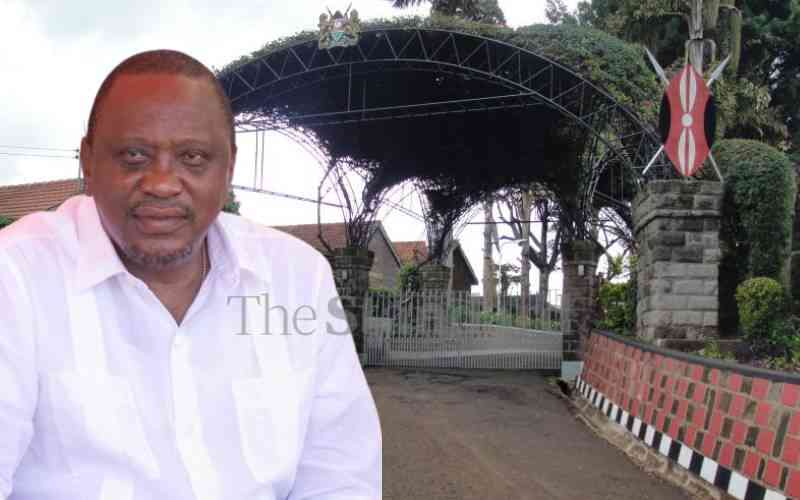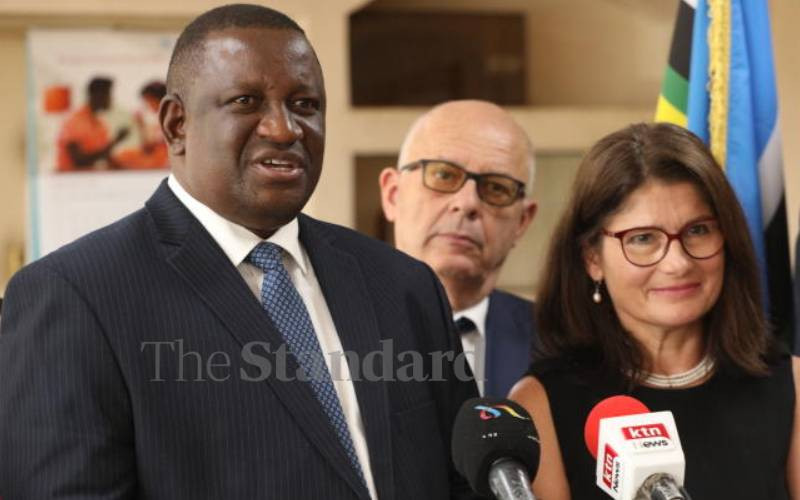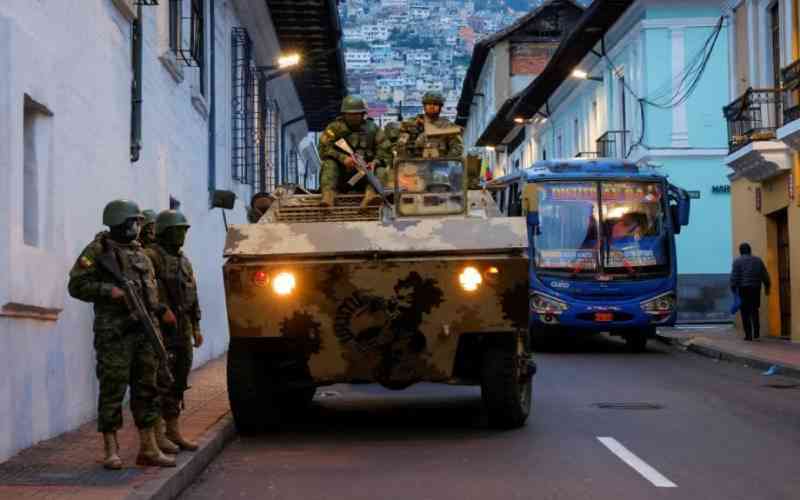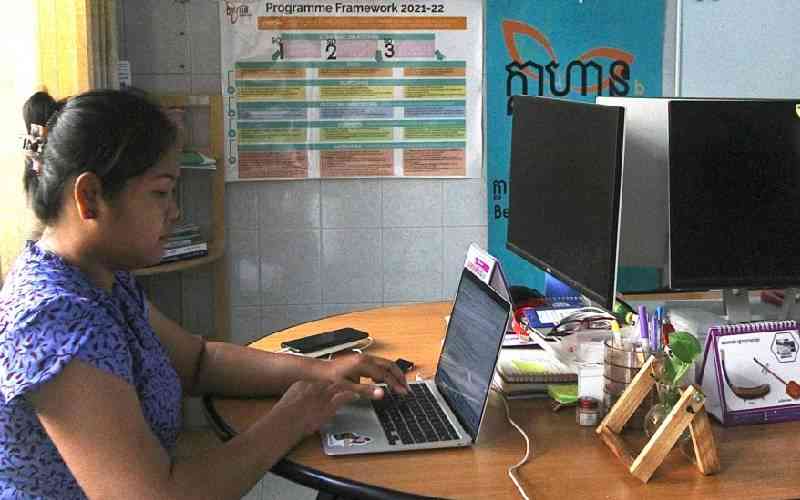The European Union unveiled its economic recovery plan on Wednesday while continuing its deconfinement in the face of the coronavirus epidemic, which is losing ground on the Old Continent but is continuing to progress in South America.
A bet at a billion euros: the European Commission said Wednesday its plan to revive the economies of 27 tested by the pandemic which has killed at least 347,723 people since its appearance in China in December.
And if the situation seems to stabilize in Europe, the epidemic continues to wreak havoc in South America.
The spread of the coronavirus "accelerates" in Brazil, Peru and Chile, warned Tuesday a regional agency of the World Health Organization, calling on these countries not to relax measures to slow the contamination.
"In South America, we are particularly concerned since the number of new cases registered last week in Brazil is the highest in a seven-day period since the start of the pandemic," said Carissa Etienne, director of the Pan American Health Organization (PAHO), based in Washington.
Peru, for its part, recorded a record number of 5,772 new contaminations with the coronavirus in 24 hours, for a total of nearly 130,000, announced Tuesday the Ministry of Health.
New epicenter
The daily number of new infections in Latin America has exceeded that of Europe and the United States, making the Latin American continent "undoubtedly" the new epicenter of the pandemic, according to PAHO.
Symbol of this aggravation, the title of the airline LATAM, the largest in Latin America, plunged Tuesday after its declaration of bankruptcy in the United States because of the consequences of Covid-19.
On the other hand, for the third day in a row, the United States deplored less than 700 daily deaths from the Covid-19, according to a count by Johns Hopkins University, which refers, at 8:30 p.m. Tuesday (12:30 GMT Wednesday).
In Europe, if the deconfinement continues, we do not forget the dead either. Spain begins a 10-day national mourning on Wednesday in memory of the victims of the coronavirus, which has killed more than 27,000 people in the country.
In Brussels, the president of the European Commission Ursula von der Leyen presents on Wednesday a long-awaited recovery plan, but which is already encountering opposition between countries of the north and the south.
Several countries have already announced their own plan to support certain sectors of their economy, like France, which pledged eight billion euros on Tuesday to save its car industry.
Growing stock markets
Stay informed. Subscribe to our newsletter
The accumulation of debts generated by these support plans, however, begins to worry the European Central Bank. Fears of the break-up of the euro zone are likely to resurface with the explosion of public debt in most countries to cope with the impact of the coronavirus, warned the ECB on Tuesday.
The financial markets, however, remained confident, confirming their progress on Tuesday in both Europe and Wall Street. The New York Stock Exchange has thus climbed steadily, showing optimism in the face of the gradual recovery of economic activity, illustrated by the partial reopening of the Wall Street parquet floor.
In the metropolis most affected by the disease, where the closure of companies is decreed at least until June, 80 New York brokers have found the legendary room of Wall Street for the first time since March 23.
The New York stock exchange is not the only symbolic place to reopen. After the archaeological site of Pompeii or the Basilica of the Nativity in Bethlehem on Tuesday, it will be the turn of the Grand Bazaar in Istanbul to find customers and visitors in a few days.
It is the first time that this covered market, one of the largest in Europe, has been closed for so long since its creation almost six centuries ago.
In Iran, the country hardest hit by the pandemic in the Middle East, restaurants reopened on Tuesday.
However, it was not until June 1 to enter the Colosseum again, the most visited tourist site in Italy. "These past few months have been very difficult, with a surreal silence that is difficult to accept," noted the leaders of the emblematic monument of the Italian capial.
Museums and football
Almost all of the famous monuments and buildings in Italy have reopened to the public for a week: the archaeological site of Pompeii on Tuesday, St. Peter's Basilica in Rome last week, the Borghese Gallery or the Capitoline Museums, the cathedrals of Florence and Milan. The Vatican Museums, another major tourist destination in the world, have also scheduled their reopening on June 1.
In Paris too, the first visitors to some museums were on Tuesday at the rendezvous, in a hurry after a long confinement to reconnect with art.
"I have only seen my creamer for two months! It is essential to return to a place of culture", exclaimed Françoise, "retired in music", delighted to find the refined elegance of the Jacquemart-André museum which hosts an exhibition around the painter Turner.
Cautious, Germany however announced on its side Tuesday wanting to extend until June 29 its distancing rules in order to contain the epidemic.
This did not prevent German football from regaining its rights, but without fans. Bayern Munich won the first German "Klassiker" ever behind closed doors on Tuesday 1-0 Tuesday in Dortmund and paved the way for an eighth consecutive championship title.
Pressure is also mounting to reopen the borders in Europe. Italy is pushing for a coordinated resumption of travel in Europe on June 15, which could become the "D-Day" of tourism, said Monday evening its Foreign Minister Luigi Di Maio.
His statements are in line with a Franco-German call for the borders to be reopened as quickly as possible, launched on Tuesday by the President of the French National Assembly and his German counterpart.
 The Standard Group Plc is a
multi-media organization with investments in media platforms spanning newspaper
print operations, television, radio broadcasting, digital and online services. The
Standard Group is recognized as a leading multi-media house in Kenya with a key
influence in matters of national and international interest.
The Standard Group Plc is a
multi-media organization with investments in media platforms spanning newspaper
print operations, television, radio broadcasting, digital and online services. The
Standard Group is recognized as a leading multi-media house in Kenya with a key
influence in matters of national and international interest.
 The Standard Group Plc is a
multi-media organization with investments in media platforms spanning newspaper
print operations, television, radio broadcasting, digital and online services. The
Standard Group is recognized as a leading multi-media house in Kenya with a key
influence in matters of national and international interest.
The Standard Group Plc is a
multi-media organization with investments in media platforms spanning newspaper
print operations, television, radio broadcasting, digital and online services. The
Standard Group is recognized as a leading multi-media house in Kenya with a key
influence in matters of national and international interest.









